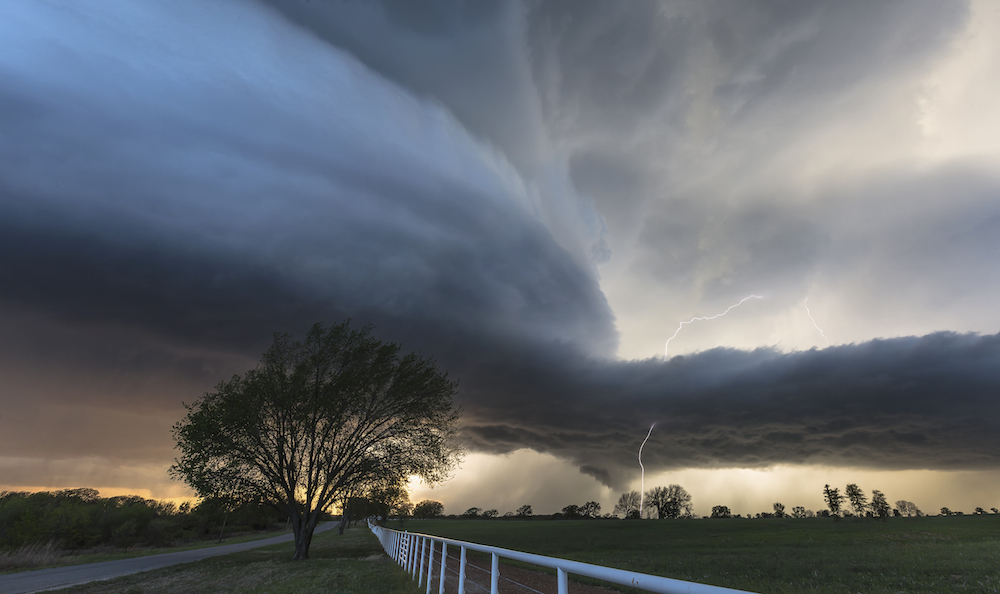Tornado Season Peaking Earlier Than Ever

The busiest part of tornado season is happening up to two weeks earlier than it did 55 years ago, finds a new study on Tornado Alley, located in the heart of the central and southern U.S. Great Plains.
Tornado Alley is known for its destructive tornadoes, the strongest of which touch down between early May and early July every year.
Tornado reports from Nebraska, Kansas, Oklahoma and northern Texas show that peak tornado activity moved about seven days earlier from 1954 to 2009. When the researchers analyzed tornadoes on a state-by-state basis, they found that some states experienced peak tornado season an average of 14 days sooner in 2009 compared with 1954. [50 Amazing Tornado Facts]
"If we take Nebraska out [of the data], it is nearly a two-week shift earlier," lead researcher John Long, a research scientist in the department of land resources and environmental sciences at Montana State University in Bozeman, Montana, said in a statement.
The analysis shows that peak tornado activity moved about 1.55 days earlier each decade. At the heart of Tornado Alley, the peak of tornado season now typically occurs on May 19, as opposed to May 26 in the 1950s, the researchers found.
For the analysis, the researchers used the original Fujita scale of tornado strength, rather than the newer Enhanced Fujita scale, because the latter scale was not implemented until 2007 and thus would not be able to cover the majority of the years in the study.
For tornadoes rated as F1 and above on the original Fujita scale of tornado strength, the peak of tornado activity is also about 14 days sooner than it was 55 years ago, according to a preliminary analysis that the researchers did not include in the study.
Get the world’s most fascinating discoveries delivered straight to your inbox.
Winds in F1 tornadoes on the original Fujita scale race between 73 and 112 mph (117 and 180 km/h). In contrast, F5 tornadoes blow between 261 and 318 mph (420 and 511 km/h).
"From a public safety perspective, if this trend (of an earlier tornado season) is indeed occurring, then people need to begin preparing for severe weather earlier in the year," Greg Carbin, the warning coordination meteorologist at the Storm Prediction Center in Norman, Oklahoma, said in the statement.
The new study does not attribute the windy shift to any one factor. The earlier tornado season, however, is in line with consequences expected of a warmer climate, the researchers said.
"If winters are not as cold, or if springtimes are warmer, the location of the jet stream is most likely displaced north of where it has been in the past," said Carbin, who was not involved in the new study. If the jet stream moves north, it can pull warm and humid air over the Midwest, where the hurricanes form. Warmer springs can cause tornado activity to happen earlier in the year, as is seen in the new study, he added.
Interestingly, earlier tornados in Oklahoma may also be linked to El Niño, which is associated with warm waters in the Pacific Ocean changing the air-surface pressure and atmospheric circulation. When El Niño conditions happened between January and April, high tornado activity also occurred earlier in the spring, the researchers found.
"The relationship we do see in Oklahoma is a light but significant connection to El Niño," study researcher Paul Stoy, an assistant professor in the department of land resources and environmental sciences at Montana State University, said in the statement. "This makes one suspect that if global climate change is changing these larger circulations, then there is a connection between a global [variability] and tornado activity.”
Still, the tornado records date back only to the 1950s, making it difficult for scientists to study long-term shifts. Also, regional factors, such as the topography of the land and areas where cool air mingles with warm air, can influence tornado formation, the researchers said.
The new study could help Tornado Alley residents know when to prepare for tornadoes, Long said. Every year, about 1,300 tornadoes hit the United States, killing about 60 people, according to the National Weather Service's Storm Prediction Center. In 2014, most of the 209 tornadoes that hit the United States happened in May, and the deadliest storms were in April, the center reported.
The study was published online Sept. 10 in the journal Geophysical Research Letters.
Follow Laura Geggel on Twitter @LauraGeggel and Google+. Follow Live Science @livescience, Facebook & Google+. Original article on Live Science.

Laura is the managing editor at Live Science. She also runs the archaeology section and the Life's Little Mysteries series. Her work has appeared in The New York Times, Scholastic, Popular Science and Spectrum, a site on autism research. She has won multiple awards from the Society of Professional Journalists and the Washington Newspaper Publishers Association for her reporting at a weekly newspaper near Seattle. Laura holds a bachelor's degree in English literature and psychology from Washington University in St. Louis and a master's degree in science writing from NYU.


